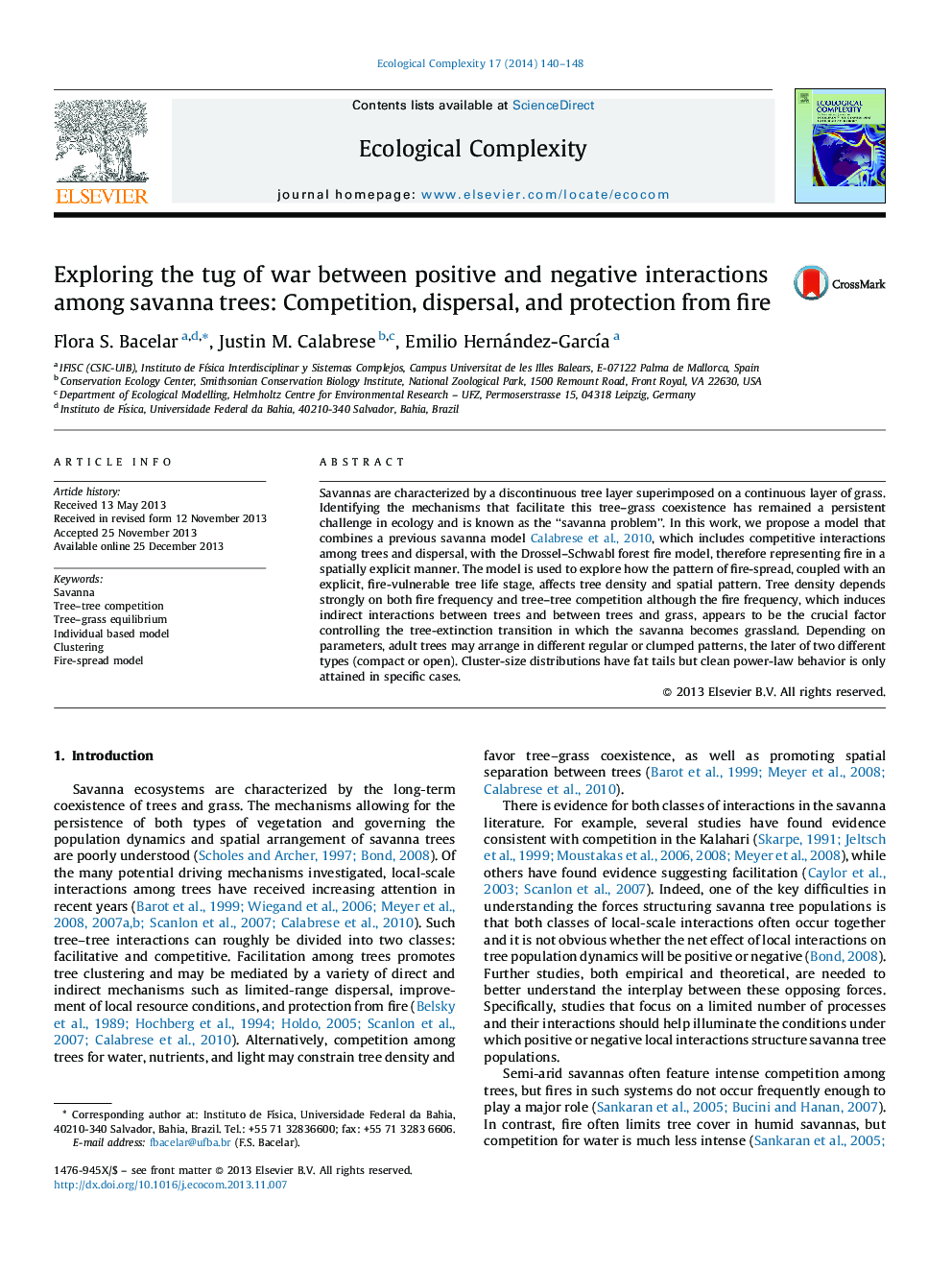| کد مقاله | کد نشریه | سال انتشار | مقاله انگلیسی | نسخه تمام متن |
|---|---|---|---|---|
| 4372474 | 1617097 | 2014 | 9 صفحه PDF | دانلود رایگان |
• We study how competition and facilitation affect tree abundance and dispersion.
• Fire frequency is the crucial factor controlling tree extinction.
• The balance between competition and facilitation governs tree spatial distribution.
• We identify when the net effects of local interactions are positive or negative.
• Regular, compact-, or open-clumped patterns form based on net local interactions.
Savannas are characterized by a discontinuous tree layer superimposed on a continuous layer of grass. Identifying the mechanisms that facilitate this tree–grass coexistence has remained a persistent challenge in ecology and is known as the “savanna problem”. In this work, we propose a model that combines a previous savanna model Calabrese et al., 2010, which includes competitive interactions among trees and dispersal, with the Drossel–Schwabl forest fire model, therefore representing fire in a spatially explicit manner. The model is used to explore how the pattern of fire-spread, coupled with an explicit, fire-vulnerable tree life stage, affects tree density and spatial pattern. Tree density depends strongly on both fire frequency and tree–tree competition although the fire frequency, which induces indirect interactions between trees and between trees and grass, appears to be the crucial factor controlling the tree-extinction transition in which the savanna becomes grassland. Depending on parameters, adult trees may arrange in different regular or clumped patterns, the later of two different types (compact or open). Cluster-size distributions have fat tails but clean power-law behavior is only attained in specific cases.
Journal: Ecological Complexity - Volume 17, March 2014, Pages 140–148
